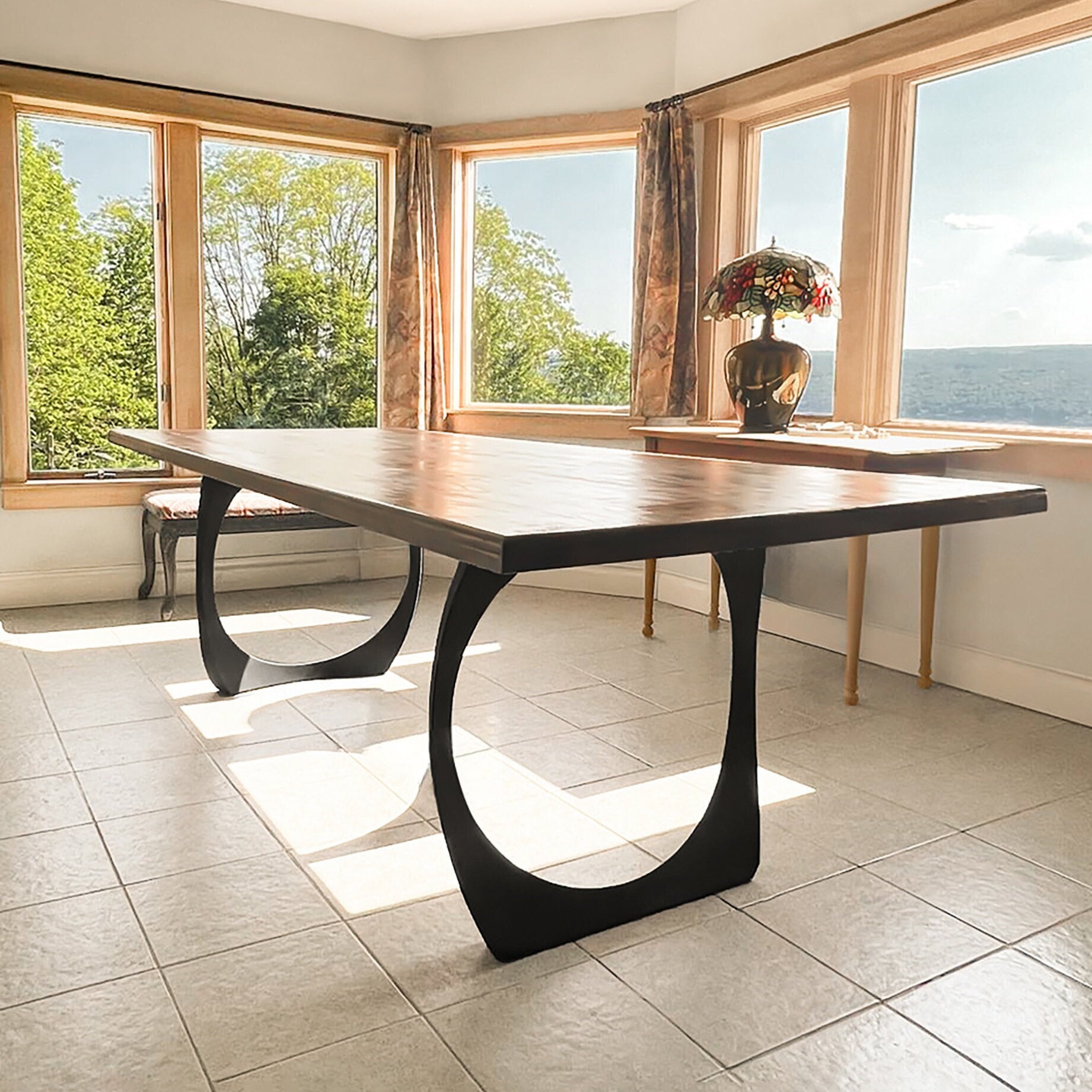Discover the very best Materials for Dining Room Table Legs for each Style
Discover the very best Materials for Dining Room Table Legs for each Style
Blog Article
A Comprehensive Take A Look At Dining Table Leg Styles: Finding the Ideal Match
Choosing the appropriate table leg style is essential for both aesthetic allure and practical functionality. Typical four legs offer classic sophistication and stability, while the stand base supplies enhanced legroom and a modern-day appearance. For those with larger tables, trestle legs make sure durable support, whereas hairpin legs present a mid-century contemporary vibe with their minimal design. The x-shaped legs mix contemporary design with boosted stability. Each of these options brings one-of-a-kind benefits, making the selection a lot more than just an issue of preference. Check out further to find which style flawlessly complements your eating space and way of living.
Standard 4 Legs
Amongst the various kinds of table leg designs, the typical four-leg design remains an ageless option for lots of homes. This timeless arrangement offers a harmonious blend of functionality and appearances, making it a seasonal favorite. 4 legs provide balanced assistance, ensuring the table remains secure and efficient in birthing significant weight. This is specifically useful for houses that regularly hold large events or utilize their eating table for several objectives, such as job or crafting.
From an aesthetic perspective, the traditional four-leg style can be conveniently adapted to different interior designs. Whether crafted from timber, steel, or a mix of materials, these legs can be elaborately carved, streamlined and minimalistic, or anything in between. Their adaptability enables them to complement both rustic and modern settings perfectly.
Moreover, the uncomplicated structure of the four-leg design promotes simplicity of movement and positioning within a room. Unlike even more complicated bases, this style lessens obstructions, supplying adequate legroom for diners. In recap, the conventional four-leg eating table leg style weds withstanding style with useful functionality, making it an astute selection for those looking for both type and function in their eating furniture.
Stand Base
Frequently commemorated for its classy and space-efficient layout, the pedestal base is a recognized alternative to the standard four-leg configuration in table leg styles. This distinct base generally includes a solitary central column sustaining the table top, which can vary in kind, from ornately sculpted wood to smooth, modern-day metal. One of the key advantages of the pedestal base is its capacity to make best use of legroom and seating versatility. Without edge legs, restaurants are managed higher liberty of movement, making it an optimal selection for round and oval tables that advertise more intimate and comprehensive celebrations.
The main column itself offers a canvas for detailed layouts and creative expressions, adding a component of visual interest under the table. In summary, the stand base incorporates performance with style, making it a fine-tuned and practical alternative for diverse eating environments.
Trestle Legs
Trestle legs provide a durable and timeless structure for dining tables, defined by their horizontal cross-bracing and sturdy support light beams. Originating from middle ages times, this style has actually developed yet preserved its necessary framework, making it a perennial fave in both traditional and contemporary setups. The main trestle light beam, commonly supported by 2 or even more vertical articles, offers extraordinary stability, enabling larger table lengths without the requirement for additional legs.
A substantial advantage of trestle leg tables is the adequate legroom they supply. Unlike tables with four edge legs, the lack of blockages at the table's sides offers unobstructed room for chairs and diners, improving comfort and accessibility. This makes trestle tables suitable for suiting larger events, whether in an eating area or a banquet hall.
From rustic farmhouse to smooth contemporary designs, trestle legs can be personalized to match individual preferences. Their long-lasting charm and practical benefits make trestle legs a compelling choice for those seeking both style and practicality in their dining table.
Hairpin Legs

The charm of barrette legs lies in their simpleness and versatility - dining room table legs. Offered in a series of materials, including steel and brass, they can be completed in numerous colors to match various interior styles. Whether combined with a rustic wood table top or a contemporary glass surface, hairpin legs effortlessly blend performance with a touch of classic beauty
Toughness is one more remarkable feature of barrette legs. Going Here Despite their delicate appearance, these legs are crafted to birth significant weight, ensuring the dining table stays secure and safe and secure. Additionally, they are fairly easy to set up, making them a prominent choice for do it yourself enthusiasts and professional furniture makers alike.
X-Shaped Legs

Built from products such as steel, wood, or a combination of both, X-shaped legs can be customized to match different style choices. Steel legs frequently offer a sleek and industrial sites feeling, perfect for loft-style apartments and modern-day eating spaces. On the other hand, wood X-shaped legs offer a warmer, much more rustic charm, appropriate for farmhouse or eclectic interiors. The flexibility in products enables homeowners to tailor their table to better fit their overall style plan.
Moreover, the engineering behind X-shaped legs guarantees even weight circulation, reducing the risk of wobbling and improving toughness. This makes them specifically fit for bigger eating tables that need extra support. Basically, X-shaped legs blend sensible engineering with contemporary aesthetics, making them a timeless option for varied eating settings.
Verdict
A detailed understanding of table leg designs exposes the unique qualities and benefits of each design. Traditional four legs provide stability and classic allure, while stand bases offer legroom and a streamlined appearance. Trestle legs make certain robust assistance for bigger tables, and hairpin legs introduce a mid-century modern-day visual. X-shaped legs integrate contemporary layout with boosted stability. Selecting the appropriate leg design makes sure both functional and visual contentment in any eating area.
Report this page